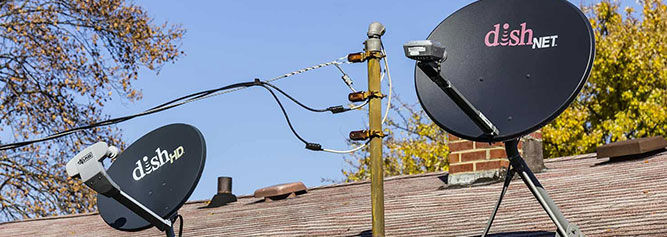Dish ends 2023 down but not out
- FierceWireless.Com
- Dec 28, 2023
- 2 min read

For Dish Network, 2023 might be one of those years that can’t end soon enough.
It started with a cybersecurity attack in February and ended with a merger with EchoStar, of which Dish will be a subsidiary.
In between, Dish grappled with the aftermath of the cyberattack, worked feverishly to meet the FCC’s June 2023 5G buildout requirement and mostly floundered with the launch of Boost Infinite.
Some high-level executive departures, like Stephen Bye on the network team and Stephen Stokols of Boost Mobile, didn’t help matters. Before the holidays, hundreds of employees were laid off.
To be sure, there were some wins along the way. The FCC confirmed that Dish met all of its June 14, 2023, band-specific 5G deployment commitments. The iPhone was certified for the Boost network, and Dish started selling the Boost Infinite postpaid phone service through Amazon. Dish remains a leader in the open RAN movement, which received a big vote of confidence when AT&T said it plans to have 70% of its wireless network traffic on open-capable platforms by late 2026.
But it’s going to take a lot more time and effort to get the ship righted before Dish is considered a viable fourth facilities-based carrier to compete against incumbents AT&T, T-Mobile and Verizon.
How dire is it?
When investment analysts write reports with titles like “The Wheels Falling Off” and “So Bad That I May Cry,” that’s a pretty good sign that things are not going in the right direction. In the third quarter, Dish reported subscriber declines in every category. In wireless, it ended the quarter with about 7.5 million wireless subscribers compared to the more than 9 million customers it had when it acquired Boost Mobile in 2020.
Analysts at MoffettNathanson have been saying that bankruptcy is the probable end game for Dish, and they concluded that Q3 results likely accelerated the probability that Dish will enter bankruptcy sometime in the next few years.
According to New Street Research’s analysis, Dish still has resources that will fund them through mid-2026 without relying on the capital markets. They see two paths for Dish: 1) building a successful wireless business that the capital markets will fund or 2) the sale of their spectrum. New Street figures Dish has two years to pursue Option No. 1 and if that fails, they expect Dish to pursue Option No. 2.
The merger with EchoStar is largely seen as a way for Dish to survive in the short term, as EchoStar has access to about $2 billion in cash reserves. In its public notice announcing approval of license transfers for the transaction, the FCC noted that because Charlie Ergen controls both companies, the recombined group won’t result in a substantial change in ownership or control.
Ergen has reminded investors that he and his team have been on narrow paths before and they survived. Dish is working to staunch the flow of customers departing its services and moving to owner economics with a cutting-edge 5G standalone network.
If his crystal ball is right, they will once again survive and serve as the fourth wireless competitor that was envisioned all those years ago.
.png)










Comments